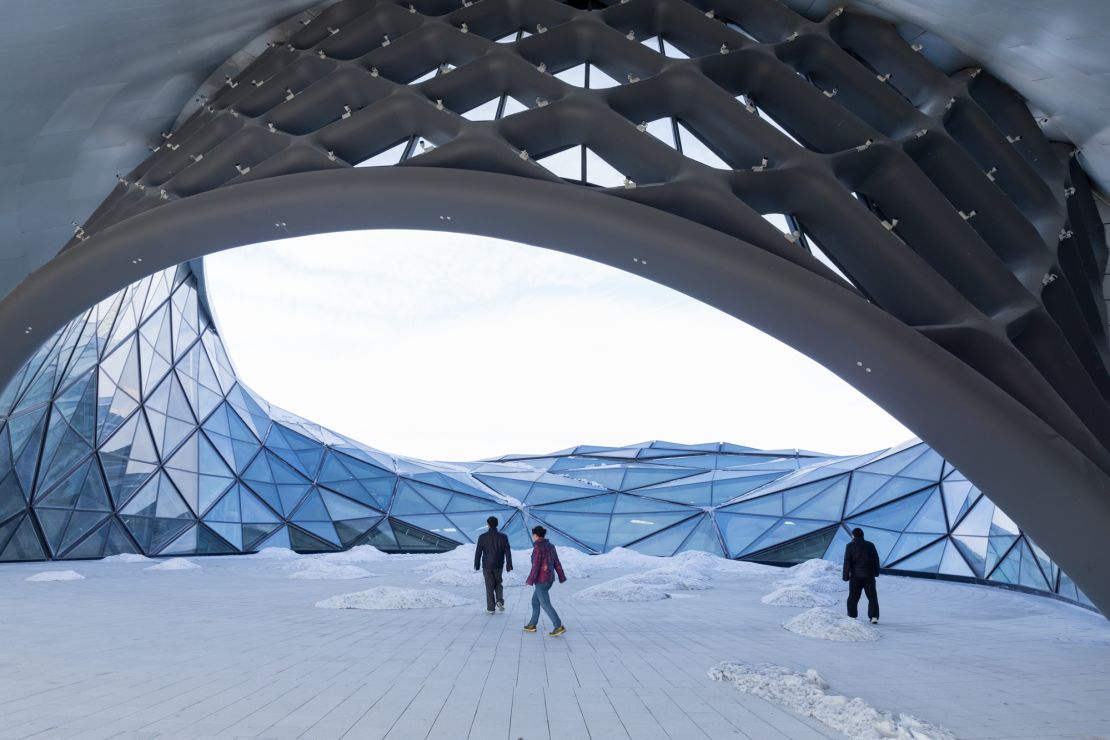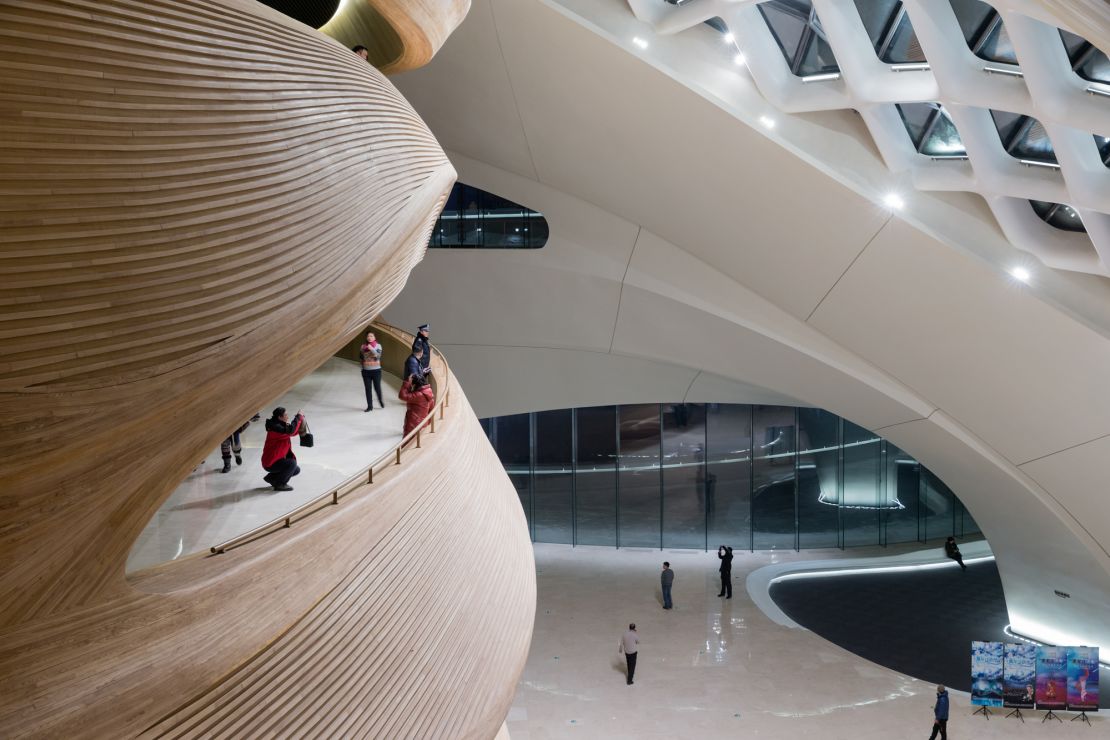Story highlights
The new Harbin Opera House looks like an extension of the surrounding landscape.
A stairwell spiraling around the exterior leads up to a viewing platform.
The project's architect says nature will play a bigger role in the future of urban planning.
The mind-bending ice sculptures at Harbin’s annual winter festival may have put the northern Chinese city on the map. But this year, it’s the new Harbin Opera House that’s stealing the show.
From above, the blazing white 850,349-square-foot venue looks like an extension of the surrounding wetlands, waterways, and snowy terrain.
Inside, the bold and beautiful Harbin Opera House achieves zen aesthetics with contemporary white walls, atmospheric skylights and tons of timber.
Ma Yansong, founding principal of the Beijing-based MAD architectural firm which designed the structure, hopes the venue will inspire a more natural approach to architecture in heavily populated cities. Harbin is home to 3.4 million people.
“There’s an emotional aspect of architecture and urban space that’s lacking in modern architecture and urban planning,” says Ma.
Setting the scene
The Harbin Opera House is the centerpiece of Harbin’s Cultural Island – a new arts hub by the Songhua River, which will include the Harbin Labor Recreation Center and Harbin Great Square.
“I want to make the building blend into the horizon so it feels like part of the land,” says Ma. “I took this pattern of the water flowing from the river banks, and I turned it into modern architecture.”
While modern landmark buildings in Chinese cities are often be towering and imposing, MAD wanted its snow-white structure to have a soothing aesthetic.
'MAD' visions
“We used the building’s shape to create an outdoor space where people would feel comfortable and want to stay,” says Ma. “I wanted people to be able to climb the building, like a mountain.”
A stairwell spiraling around the exterior leads up to a viewing platform, enabling visitors to explore every inch of the opera house.
“It’s more than just a typical landmark that you can only look at,” says Ma.
An opera doesn’t have to be in session for guests to visit. The building is always open to the public, and features an open-air pavilion for performances, weddings, and picnics.
“It’s art that people can look at, enter and use,” says Ma. “I think that’s what I want to bring to architecture. Beyond the functional – the shape and the space and the light – I want to bring atmosphere.”
Proof of its success, perhaps, are the scores of Chinese couples flocking to the building to have their wedding photographs taken.
The show must go on
With such a subtly arresting facade, one might assume that the opera halls play second fiddle.
But MAD’s nature-inspired design continues inside the two theaters.
Seemingly carved out of Manchurian Ash wood, the 1,600-guest Grand Theater feels rich and warm.
If it weren’t for the skylights, sitting in here might feel like watching the opera from deep inside the belly of a tree.

Nature is also part of the performance in the second, more intimate theater. This 400-guest venue features a sound-proof wall of windows which showcases a panoramic backdrop.
“The connection between the interior and the exterior landscape is very important to me,” says Ma.
“I like when you sit there and you look at the natural light streaming in, and the concrete walls become natural waves like water flowing from outside.”
Elsewhere in the building, wide wooden stairwells wind ethereally through the opera house, while light coming in through skylights bounces off the sparkling white walls.
Designing for the future
Ma predicts that nature will play a bigger role in the future of urban planning, beyond Harbin’s wetlands.
“We are at a turning point. We still have a lot of people making very classic modern architecture that’s built for efficiency – a lot of straight lines, 90-degree corners, the boxes that we normally see in the city,” says Ma.

“As buildings get taller and cities denser, designers need to instill a sense of community and nature in their architecture.”
“Humans feel so lost in these large-scale structures.”
When planning cities, Ma thinks it’s time to start talking about the emotional connection between humans and nature.
“Typical modern urban developments look the same everywhere. They’re huge scale, they don’t have enough public space,” says Ma. “They’re not designed for community.
“(I think we should) bring in some beautiful scenery, so people can always look in one direction and imagine something beyond the modern high-density urban context.”


































